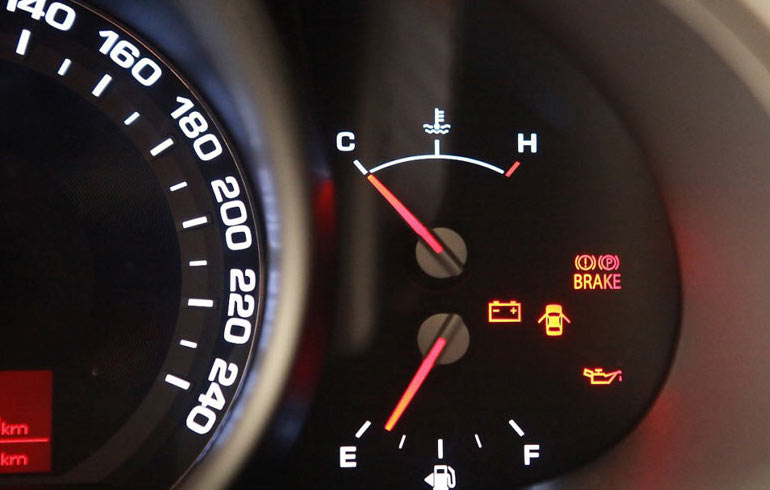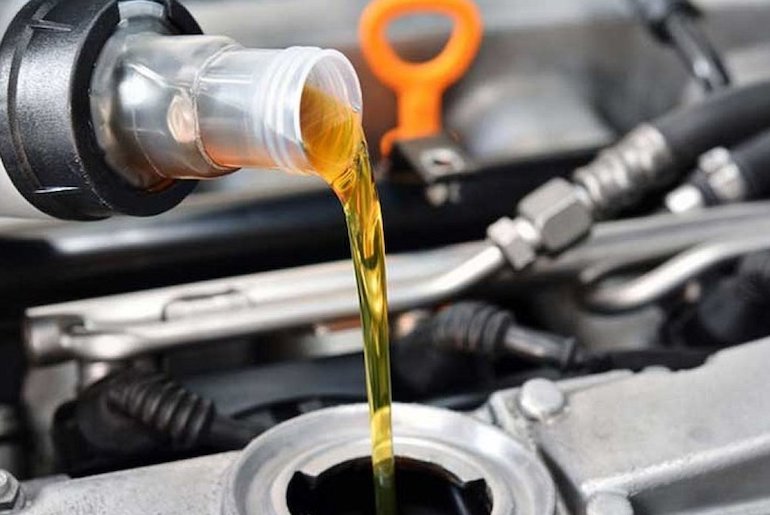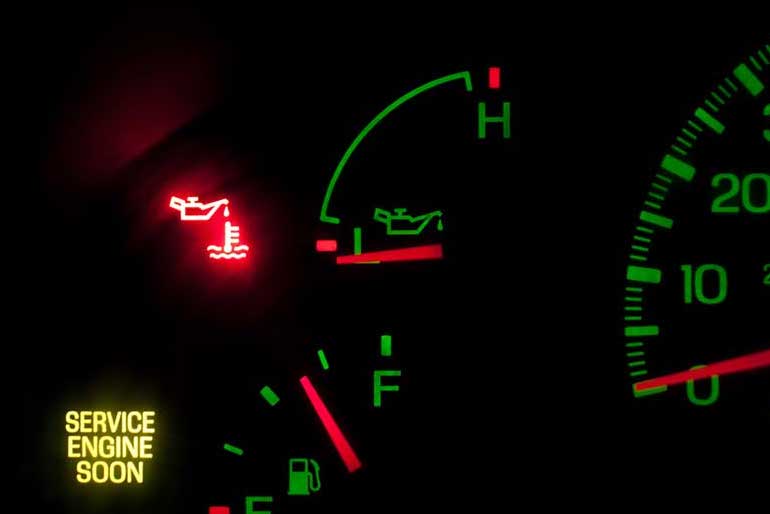
What should be the oil pressure in the engine? Why does pressure drop or rise?
The oil pressure in the engine is a parameter on which the performance of the power unit depends. However, if you ask the average car owner the question: “What should be the oil pressure in the engine?”, He is unlikely to give an articulate answer to it.
The fact is that in most modern cars there is no separate pressure gauge on the instrument panel that displays this parameter. And a malfunction in the lubrication system is signaled by a red light in the form of a watering can. If it lights up, then the oil pressure has increased sharply or dropped to critical values. So, you need to at least stop the vehicle and deal with the problem.
What determines the oil pressure in the engine?
The oil pressure in the engine is not a constant value, depending on many parameters. Any car manufacturer specifies acceptable limits. For example, if we take averaged data for different car models, then the valid values will look something like this:
- 1.6 and 2.0 liter gasoline engines - 2 atmospheres at idle, 2.7-4.5 atm. at 2000 rpm;
- 1.8 liters - 1.3 at cold, 3.5-4.5 atm. at 2000 rpm;
- 3.0 liter engines - 1.8 on x.x., and 4.0 atm. at 2000 rpm.
For diesel engines, the picture is slightly different. The oil pressure on them is lower. For example, if we take the popular TDI engines with a volume of 1.8-2.0 liters, then at idle the pressure is 0.8 atm. When you rev up and shift into higher gears at 2000 rpm, the pressure rises to two atmospheres.

Recall that this is only approximate data for specific operating modes of the power unit. It is clear that with an increase in speed to maximum power, this parameter will grow even higher. The required level is pumped with the help of such an important device in the lubrication system as an oil pump. Its task is to force the engine oil to circulate through the engine jacket and wash all the interacting metal elements: the walls of the pistons and cylinders, the crankshaft journals, the valve mechanism and the camshaft.
A drop in pressure, as well as its sharp increase, are alarming situations. If you do not pay attention to the burning icon on the panel in time, the consequences will be very serious, since during oil starvation, the expensive cylinder-piston group and crankshaft wear faster.
Why oil pressure is abnormal?
Excessive pressure leads to the fact that the oil begins to flow out from under the seals and valve cover, enters the combustion chambers, as evidenced by the unstable operation of the engine and the exhaust with a characteristic smell from the muffler. In addition, the oil begins to foam when the crankshaft counterweights rotate. In a word, the situation is not pleasant, leading to huge waste, up to a major overhaul.
Why is this happening:
- improperly selected oil, more viscous;
- fake oil;
- obstruction of oil pipes, oilers and channels - due to clogging or increased viscosity;
- clogged filter;
- malfunctions of the pressure reducing or bypass valve;
- excessive gas pressure in the crankcase due to a faulty oil separator.
These problems can be solved by changing the oil and filter. Well, if the valves, the oil separator or the pump itself do not function normally, they will have to be changed. There is no other way out.
Note that high pressure is a fairly common situation even for new cars. But if it starts to fall, this is already a reason to think, since any minder is well aware that low oil pressure is a sign of a worn out engine and an upcoming overhaul. Why does oil pressure drop?

If we discard such a reason as an insufficient level due to the forgetfulness of the car owner, then other reasons may be as follows:
- damage (sticking) of the pressure reducing valve;
- oil dilution due to cylinder head gasket wear and antifreeze penetration into the crankcase;
- insufficient viscosity of engine oil;
- increased wear of parts of the oil pump, piston rings, connecting rod bearings of the crankshaft.
If there is wear on engine parts, then the pressure drop is accompanied by a decrease in compression. Other signs testify to this: increased fuel consumption and the oil itself, a drop in engine thrust, unstable idling and when switching to different speed ranges.
What should I do to keep the pressure from dropping?
First of all, you need to make sure that the pressure sensor is working properly. When the light with a watering can on the instrument panel lights up or when it flashes, we stop the car, open the hood and measure the pressure using a special pressure gauge. The pressure gauge outlet is screwed into place of the sensor on the engine. The motor must be warm. We fix the pressure in the crankcase at idle and at 2000 rpm. Let's check the table.

In order for the pressure to be always normal, you must adhere to the following rules:
- fill in the oil recommended by the manufacturer according to the viscosity level - we have already discussed this topic on vodi.su;
- we observe the frequency of changing the oil and oil filter;
- regularly flush the engine with additives or flushing oil;
- if suspicious symptoms are detected, we go for diagnostics for early identification of the cause.
The simplest thing a car owner can do is to regularly measure the oil level in the crankcase with a dipstick. If the lubricant contains metal particles and impurities, it must be changed.
Loading…